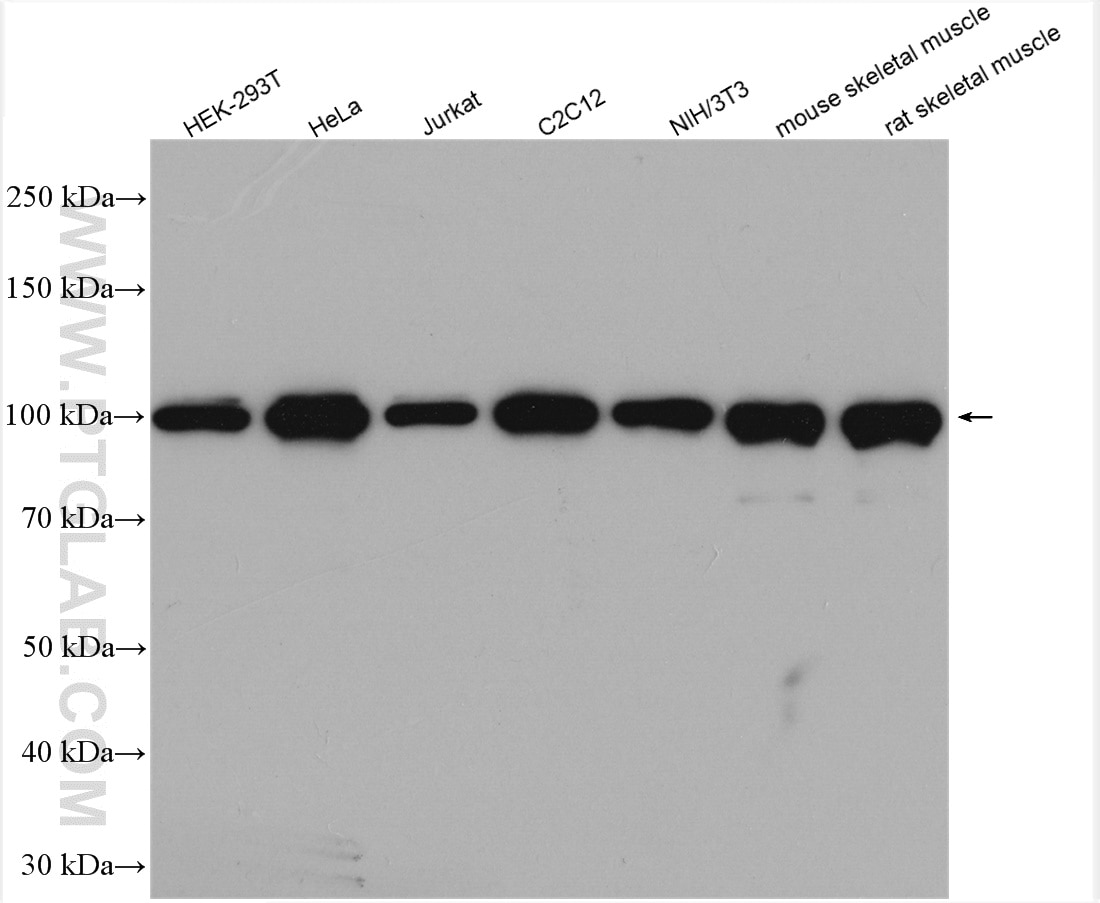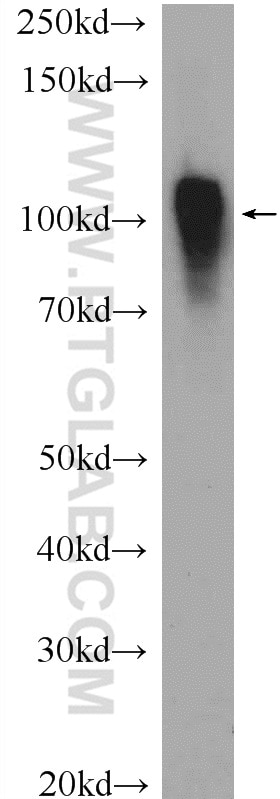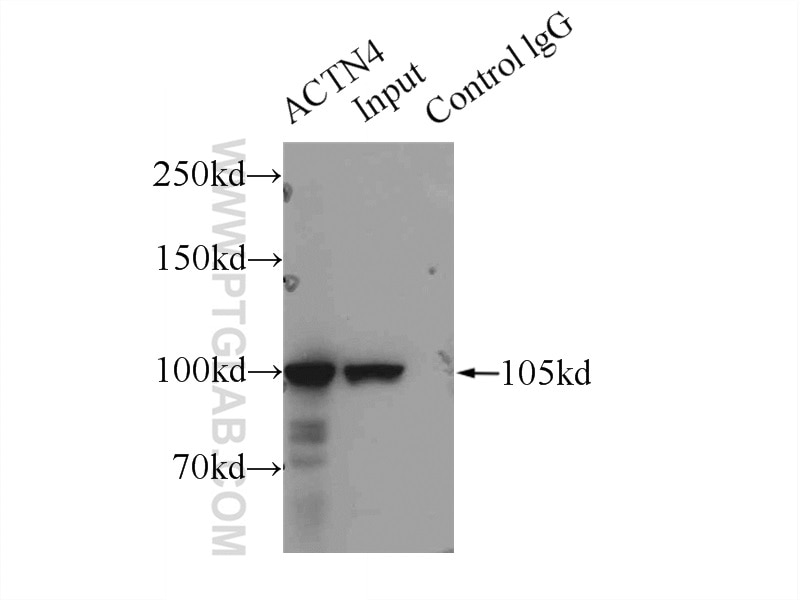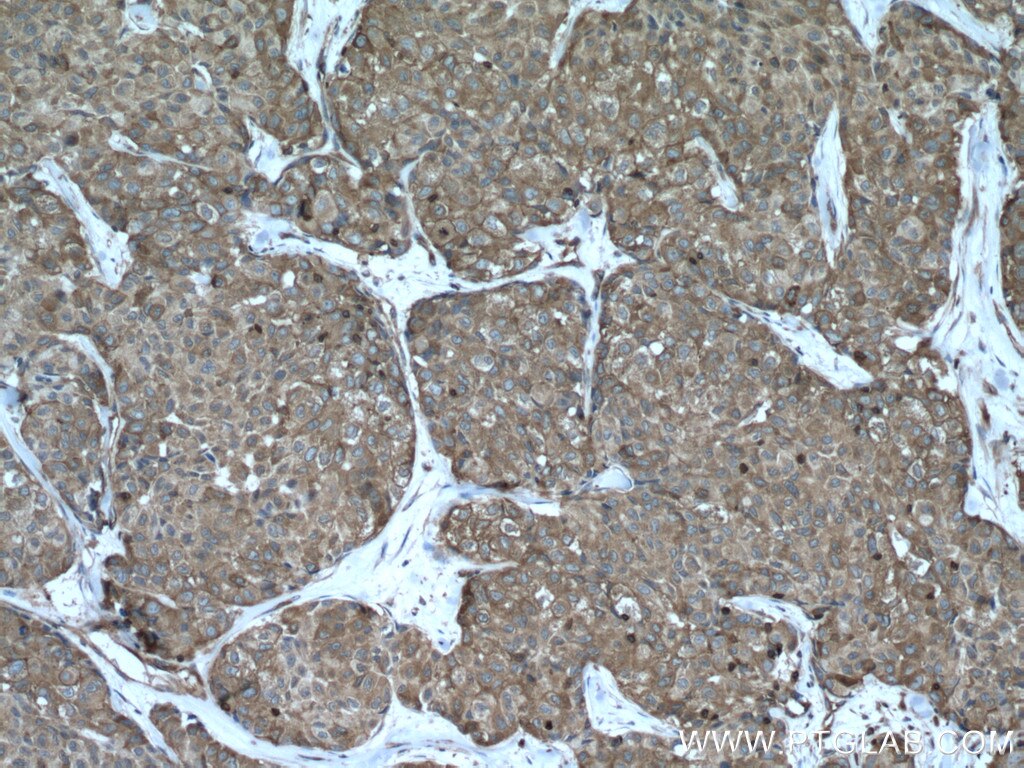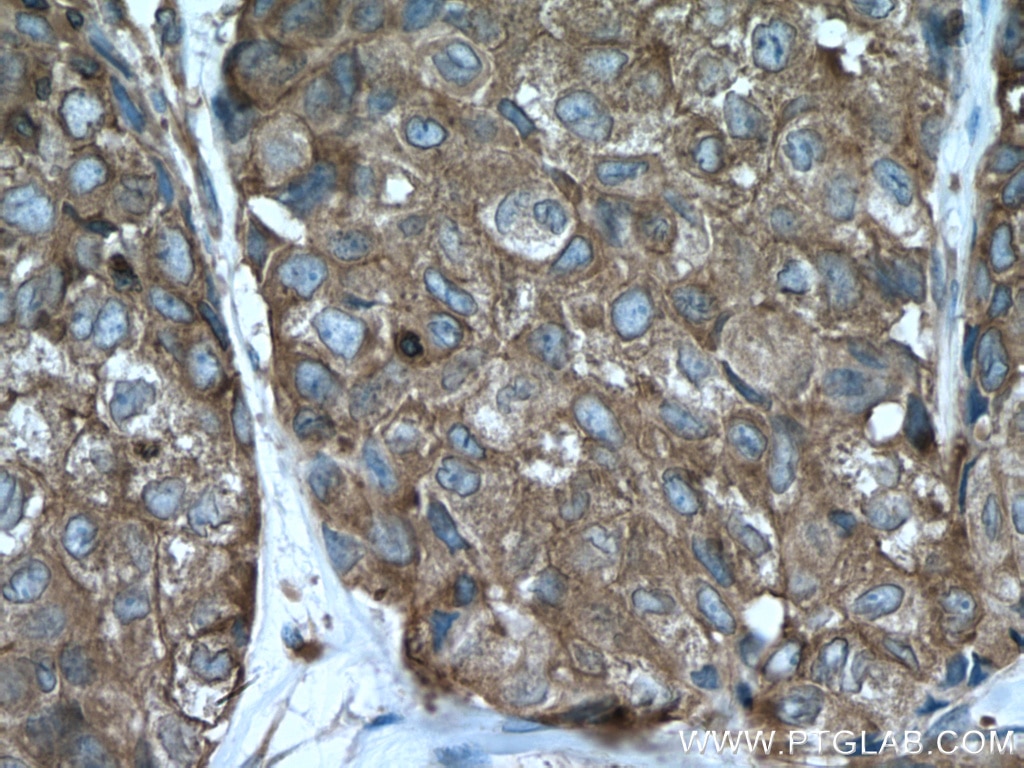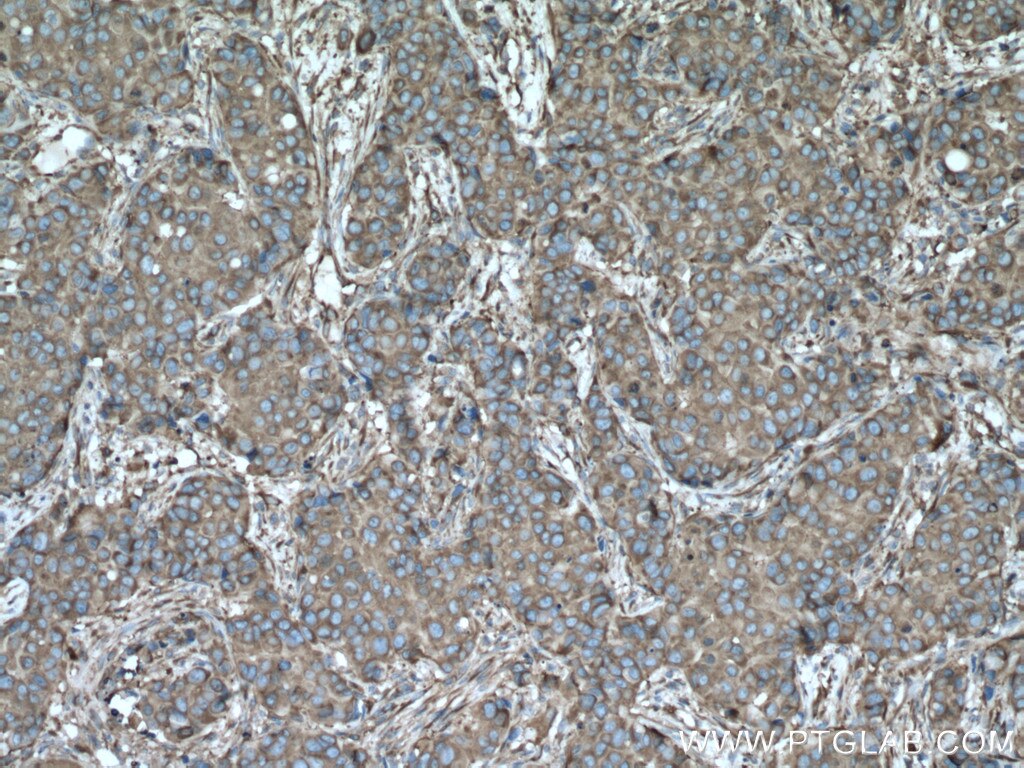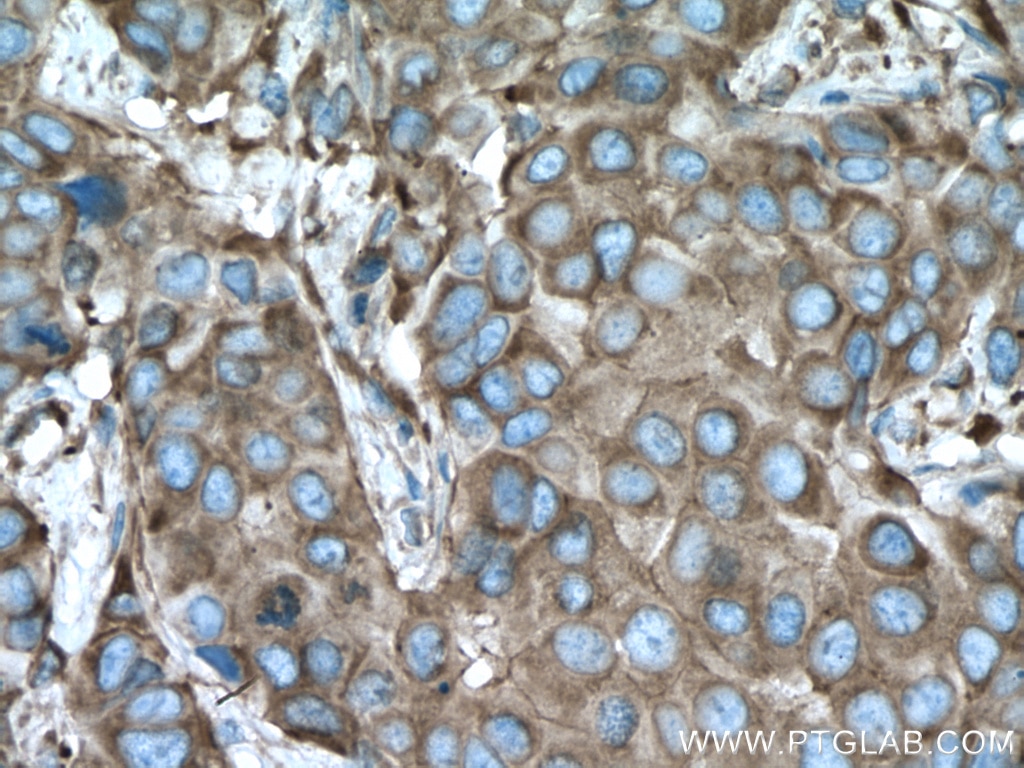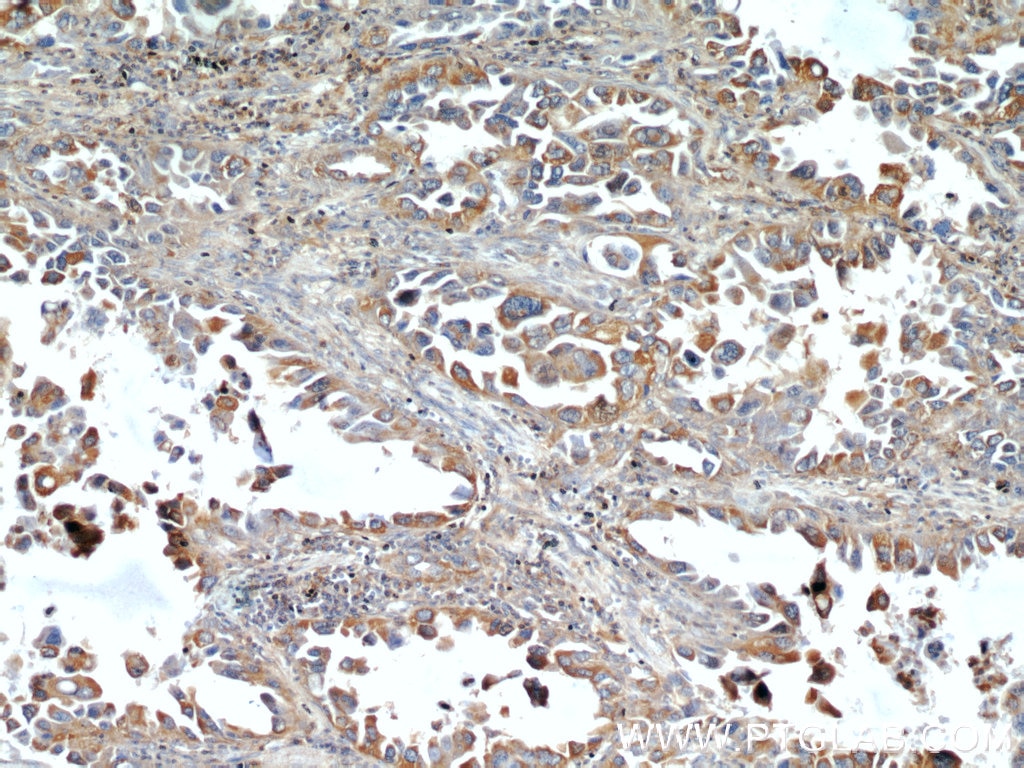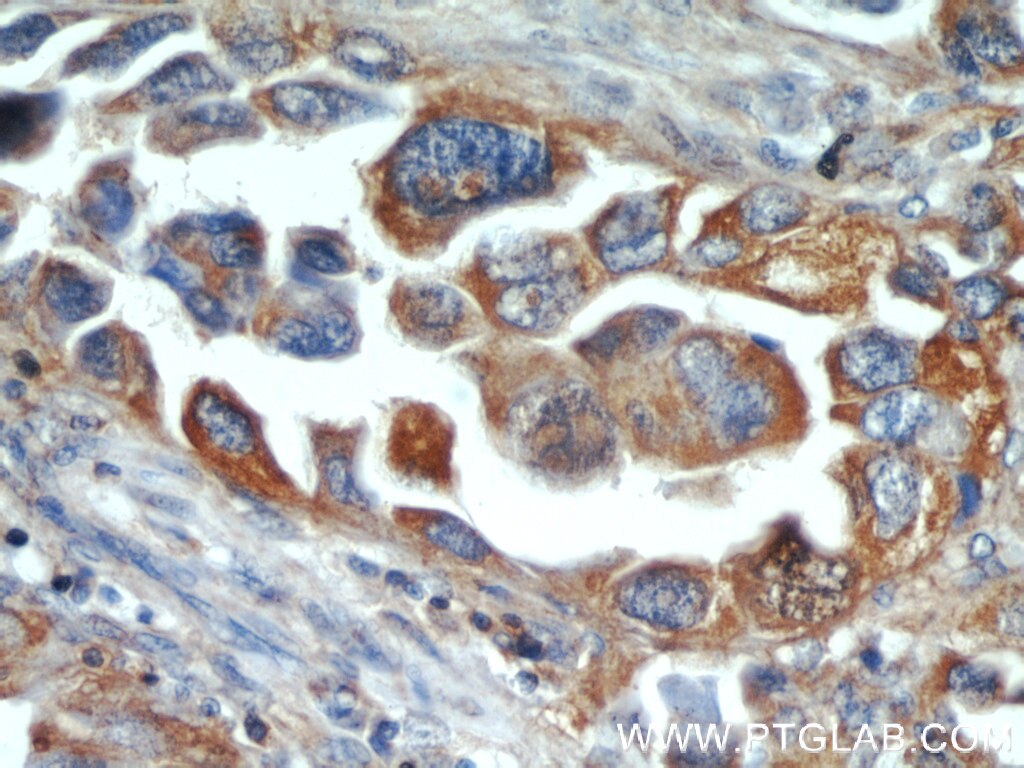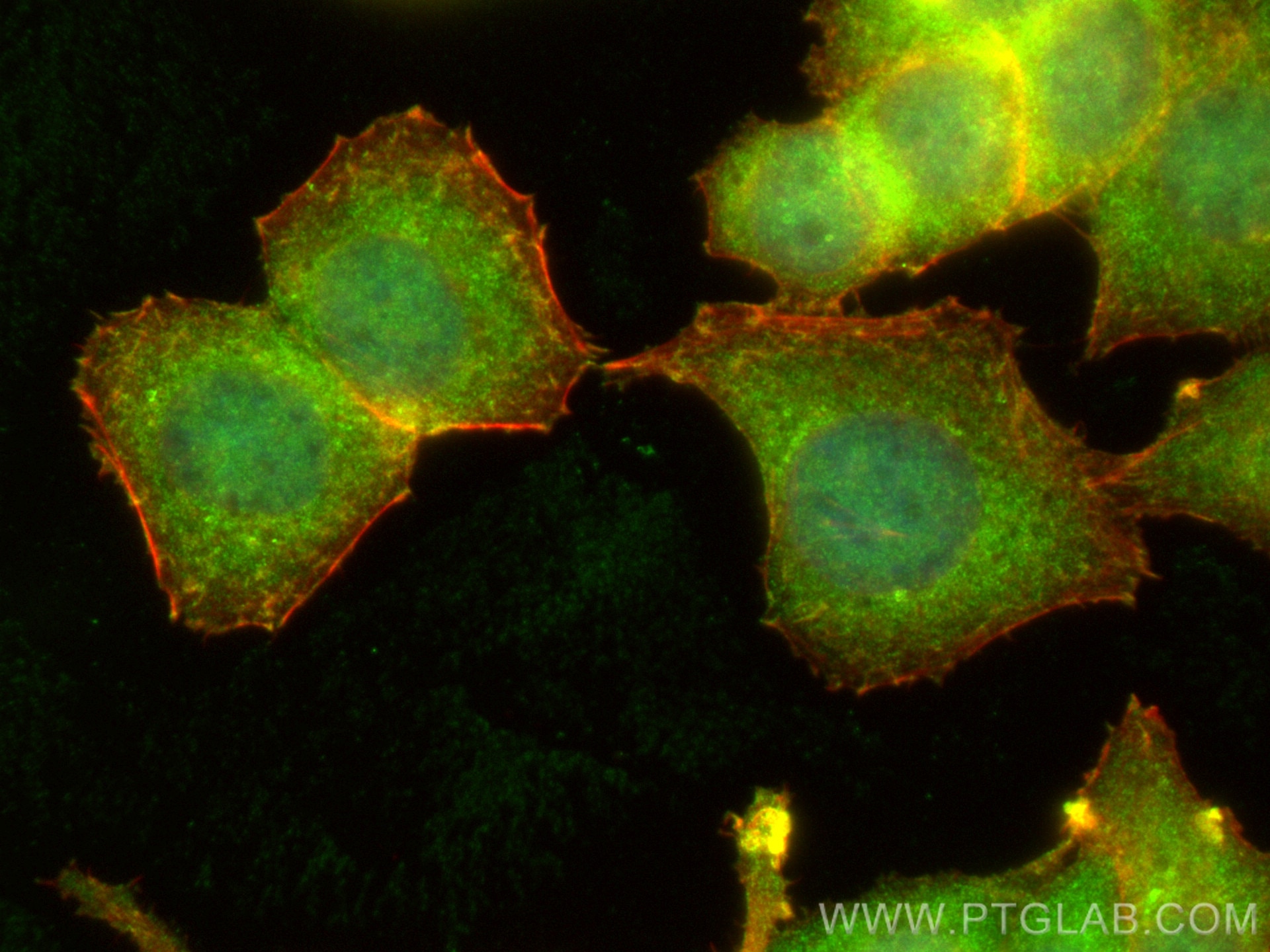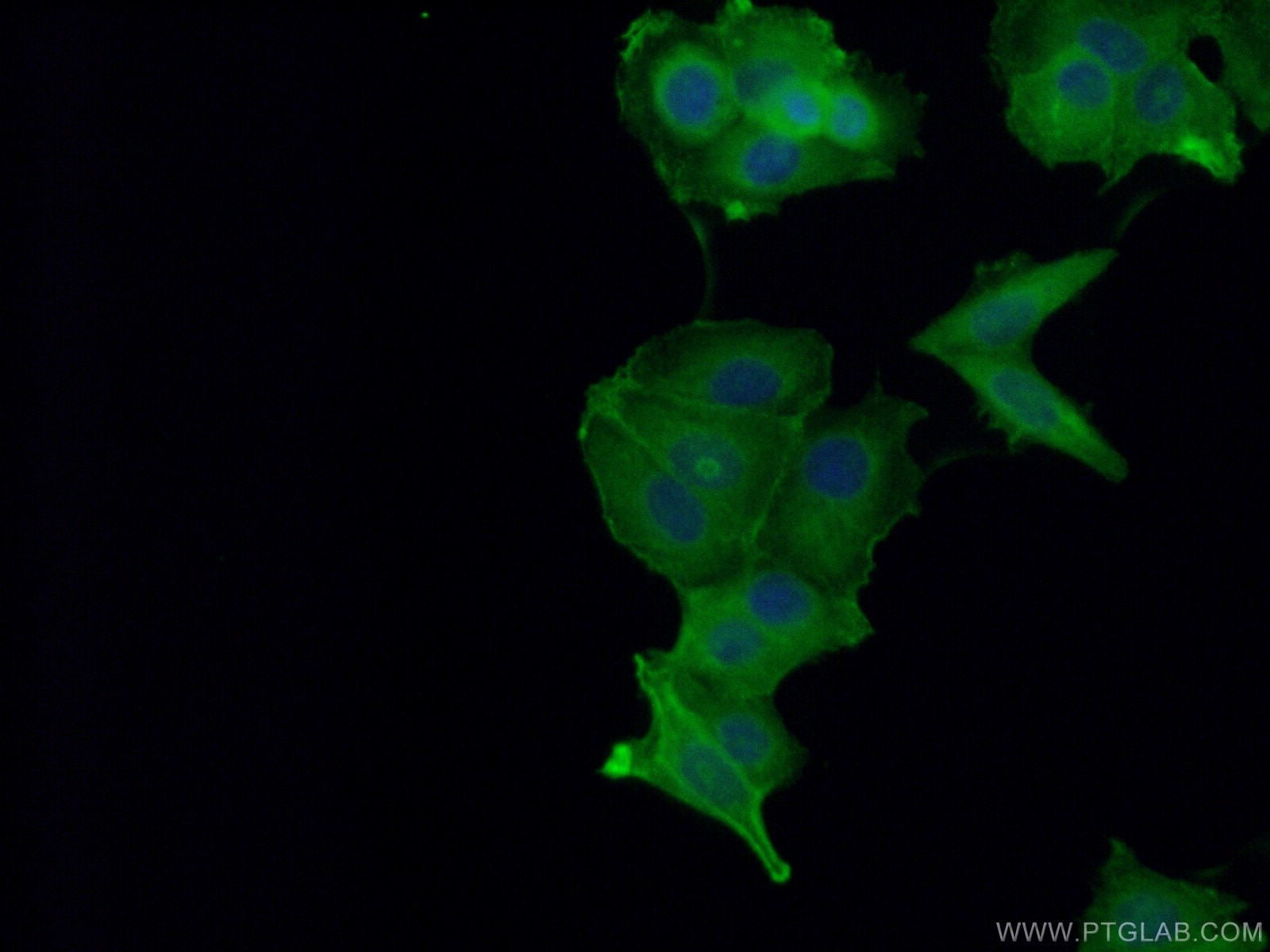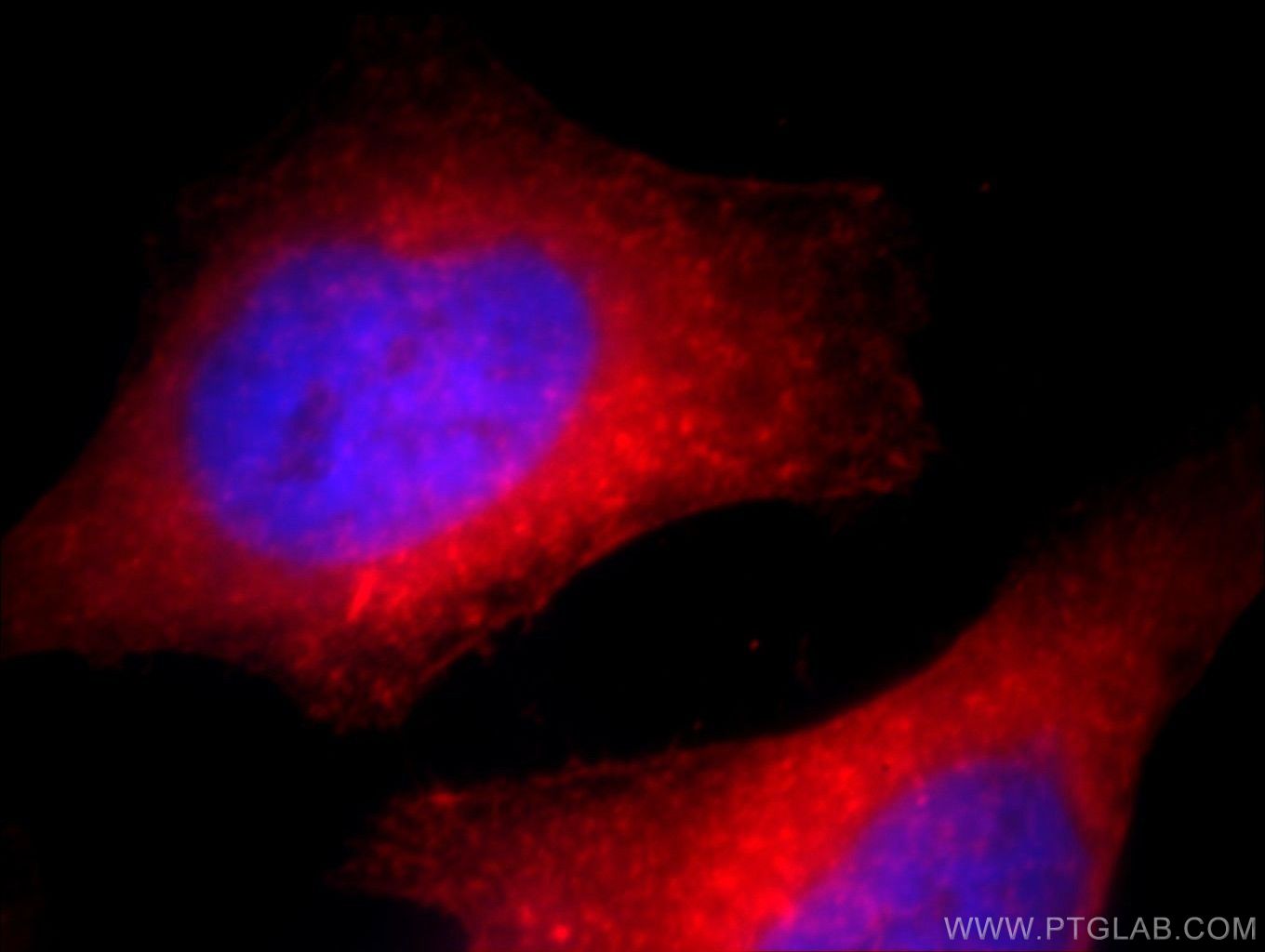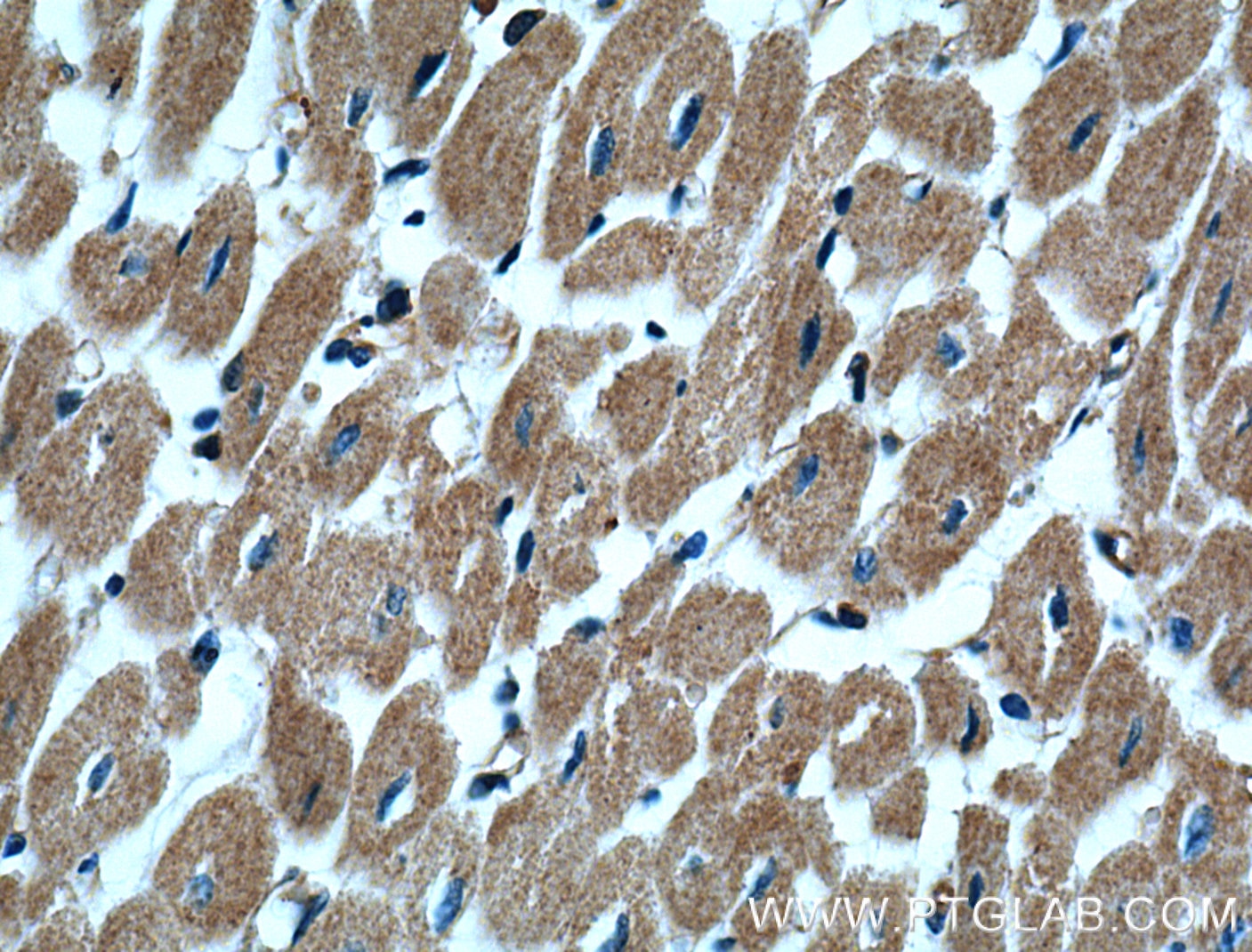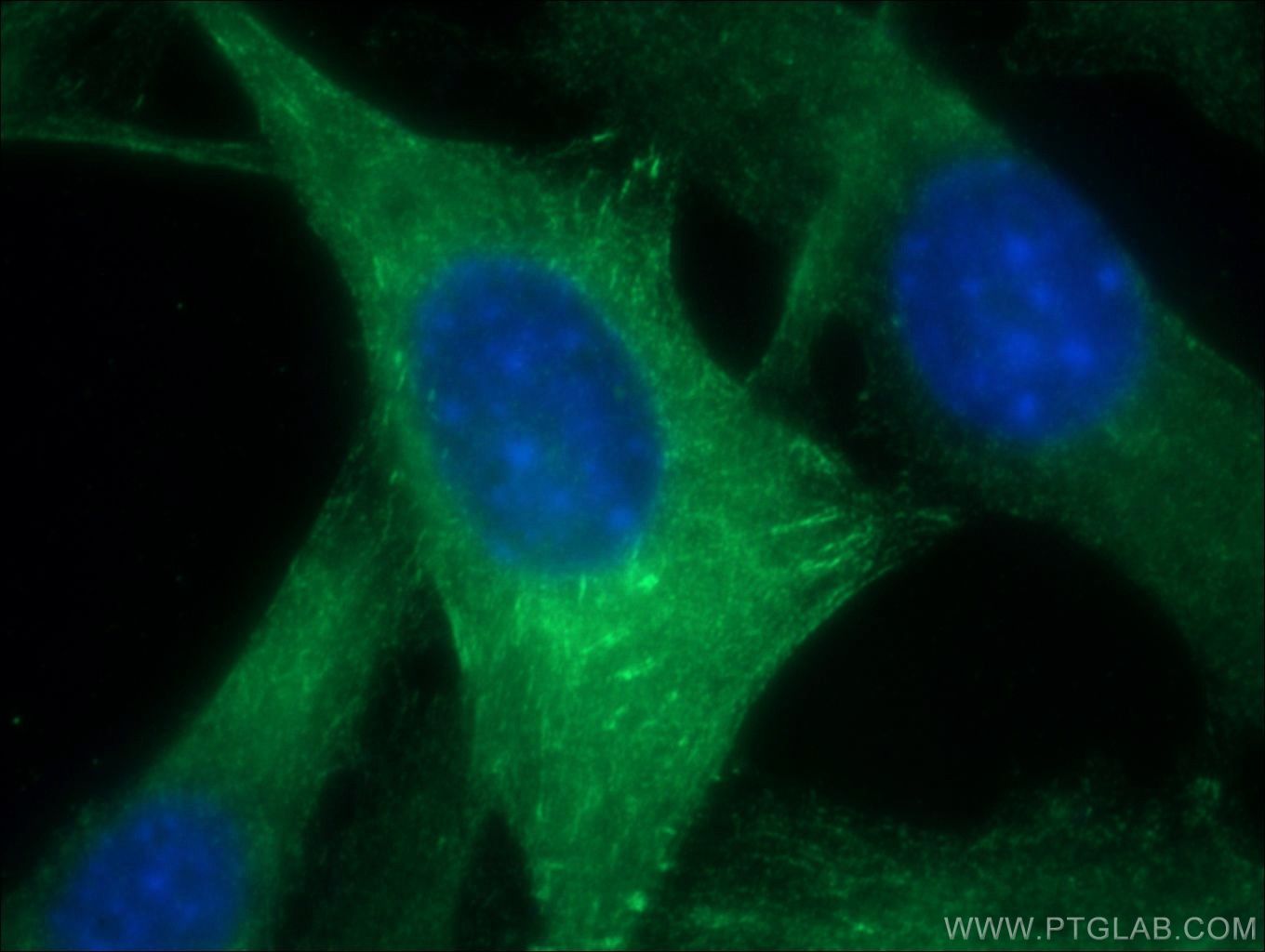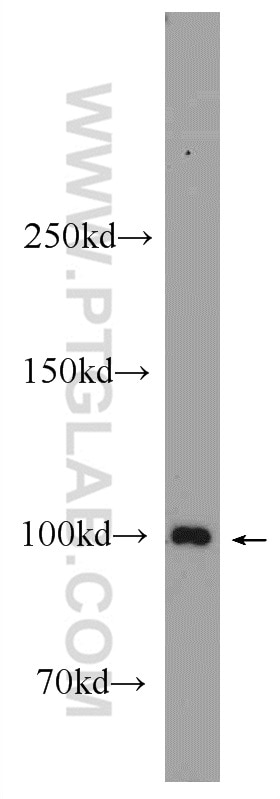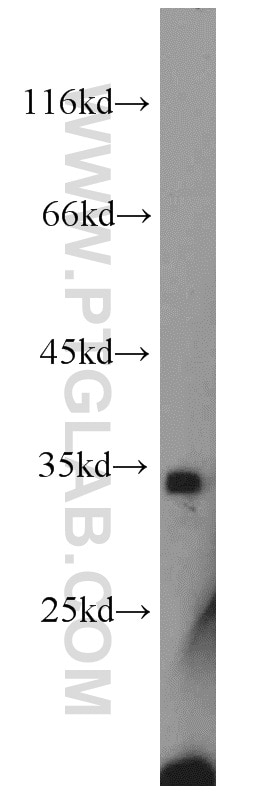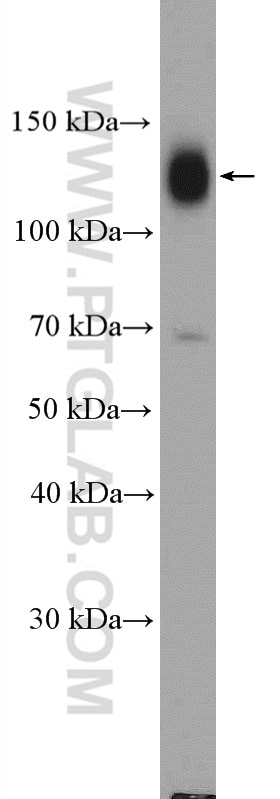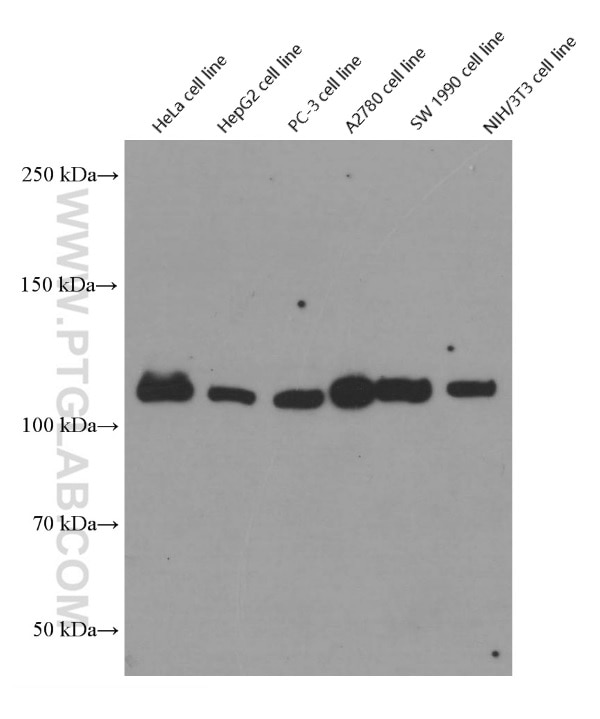- Phare
- Validé par KD/KO
Anticorps Polyclonal de lapin anti-ACTN4
ACTN4 Polyclonal Antibody for WB, IP, IF, IHC, ELISA
Hôte / Isotype
Lapin / IgG
Réactivité testée
Humain, rat, souris
Applications
WB, IHC, IF/ICC, IP, CoIP, ELISA
Conjugaison
Non conjugué
N° de cat : 19096-1-AP
Synonymes
Galerie de données de validation
Applications testées
| Résultats positifs en WB | cellules HEK-293T, cellules C2C12, cellules HeLa, cellules Jurkat, cellules NIH/3T3, muscle squelettique de rat, muscle squelettique de souris, tissu hépatique de souris |
| Résultats positifs en IP | cellules HeLa |
| Résultats positifs en IHC | tissu de cancer du poumon humain, tissu de cancer du sein humain il est suggéré de démasquer l'antigène avec un tampon de TE buffer pH 9.0; (*) À défaut, 'le démasquage de l'antigène peut être 'effectué avec un tampon citrate pH 6,0. |
| Résultats positifs en IF/ICC | cellules MCF-7, cellules HeLa |
Dilution recommandée
| Application | Dilution |
|---|---|
| Western Blot (WB) | WB : 1:5000-1:50000 |
| Immunoprécipitation (IP) | IP : 0.5-4.0 ug for 1.0-3.0 mg of total protein lysate |
| Immunohistochimie (IHC) | IHC : 1:50-1:500 |
| Immunofluorescence (IF)/ICC | IF/ICC : 1:200-1:800 |
| It is recommended that this reagent should be titrated in each testing system to obtain optimal results. | |
| Sample-dependent, check data in validation data gallery | |
Applications publiées
| KD/KO | See 2 publications below |
| WB | See 13 publications below |
| IHC | See 2 publications below |
| IF | See 5 publications below |
| ELISA | See 1 publications below |
| CoIP | See 1 publications below |
Informations sur le produit
19096-1-AP cible ACTN4 dans les applications de WB, IHC, IF/ICC, IP, CoIP, ELISA et montre une réactivité avec des échantillons Humain, rat, souris
| Réactivité | Humain, rat, souris |
| Réactivité citée | rat, Humain, souris |
| Hôte / Isotype | Lapin / IgG |
| Clonalité | Polyclonal |
| Type | Anticorps |
| Immunogène | ACTN4 Protéine recombinante Ag13546 |
| Nom complet | actinin, alpha 4 |
| Masse moléculaire calculée | 105 kDa |
| Poids moléculaire observé | 100-105 kDa |
| Numéro d’acquisition GenBank | BC005033 |
| Symbole du gène | ACTN4 |
| Identification du gène (NCBI) | 81 |
| Conjugaison | Non conjugué |
| Forme | Liquide |
| Méthode de purification | Purification par affinité contre l'antigène |
| Tampon de stockage | PBS avec azoture de sodium à 0,02 % et glycérol à 50 % pH 7,3 |
| Conditions de stockage | Stocker à -20°C. Stable pendant un an après l'expédition. L'aliquotage n'est pas nécessaire pour le stockage à -20oC Les 20ul contiennent 0,1% de BSA. |
Informations générales
ACTN4 (alpha actinin 4) is a ubiquitous actin-binding protein that cross-links actin filaments into bundles to form filopodia, and has a crucial role in cytoskeletal organization. ACTN4 is colocalized with actin stress fibers and is dispersed in the cytoplasm and in the nucleus. Increased levels of ACTN4 have been associated with cancer metastasis, indicating its implication in cancer cell migration and metastasis. Defects in ACTN4 cause glomerular disease. This antibody recognizes 100-105 kDa of endogenous ACTN4 protein in various lysates. (22370640, 10700177)
Protocole
| Product Specific Protocols | |
|---|---|
| WB protocol for ACTN4 antibody 19096-1-AP | Download protocol |
| IHC protocol for ACTN4 antibody 19096-1-AP | Download protocol |
| IF protocol for ACTN4 antibody 19096-1-AP | Download protocol |
| IP protocol for ACTN4 antibody 19096-1-AP | Download protocol |
| Standard Protocols | |
|---|---|
| Click here to view our Standard Protocols |
Publications
| Species | Application | Title |
|---|---|---|
J Thorac Oncol Alpha-actinin 4 is Associated with Cancer Cell Motility and is a Potential Biomarker in Non-Small-Cell Lung Cancer. | ||
Cancer Immunol Immunother Circulating PD-L1 is associated with T cell infiltration and predicts prognosis in patients with CRLM following hepatic resection. | ||
Sci Rep Poly-L-ornithine enhances migration of neural stem/progenitor cells via promoting α-Actinin 4 binding to actin filaments. | ||
J Cell Sci GIPC3 couples to MYO6 and PDZ domain proteins and shapes the hair cell apical region | ||
Amino Acids Quantitative proteomic dissection of a native 14-3-3ε interacting protein complex associated with hepatocellular carcinoma. |
